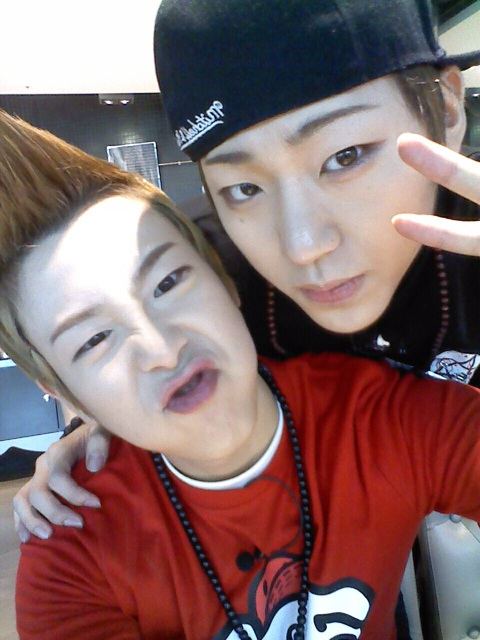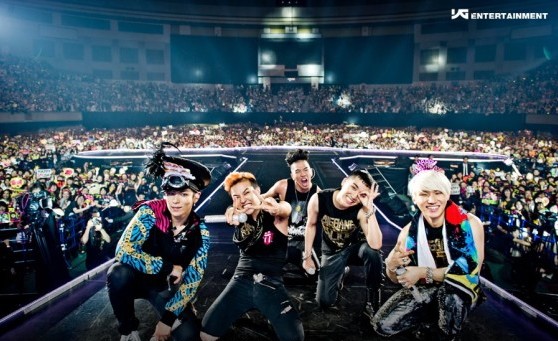 In any other instance, I’ll be the first one to tell you how much I hate seeing updates about every other idol and their flaming charisma or V-line or perfect aegyo or something useless of the like; but in all honesty, the selca wields great, understated power in the world of K-pop.
In any other instance, I’ll be the first one to tell you how much I hate seeing updates about every other idol and their flaming charisma or V-line or perfect aegyo or something useless of the like; but in all honesty, the selca wields great, understated power in the world of K-pop.
When they’re not endless photos of cats (looking at you JYJ), selcas put fans like you and me alongside our favorite idols, whether it’s backstage at a concert or behind the scenes of a music video. Selcas offer glimpses into idols’ personal lives and allow us to connect on a more personal level as idols tweet their thoughts and keep fans updated on what they’re doing from every idol-life moment to mundane reality. Suddenly through selca and the social media that brings it to us, loving an idol becomes so much easier and so effortless. But what has the selca and social media done to help the global K-pop takeover, other than supply fandoms with the heartfelt messages from idol themselves and cellphone camera-quality close ups that sometimes rock our worlds?
A great deal, some might argue. Though there are times when selcas make headlines and paragraphs are devoted to describing in words the sheer and utter glory that is contained within the picture, times when I honestly shake my head and wonder what has happend to the news world, there are times where selcas have made me fall totally in love with the raw and real side of idols as we know them. For example, I would have never had known Doojoon had such a jaw-dropping sense of humor had it not been for his many hilarious pictures, like the one above. Or how would I have ever experienced physically flipping out of a chair when Jun.K tweeted a picture of his never-before-seen abs that fateful day so many months ago?
 But more than that, selcas and social media have brought Hallyu to an exponentially increasing number of fans in North America, South America, and Europe simply by making idols available to those fans through the internet. Now virtually anyone in the world can keep tabs on what their favorite idols are doing, when they’re doing it, and where they’re doing it. And sure, saying it like that makes following idols on sites like Twitter sound extra stalkerish, but anyone who does it can tell you how awesome it is to see idols tweeting just seconds apart from you, or, if you’re extra lucky, to get replies from idols themselves.
But more than that, selcas and social media have brought Hallyu to an exponentially increasing number of fans in North America, South America, and Europe simply by making idols available to those fans through the internet. Now virtually anyone in the world can keep tabs on what their favorite idols are doing, when they’re doing it, and where they’re doing it. And sure, saying it like that makes following idols on sites like Twitter sound extra stalkerish, but anyone who does it can tell you how awesome it is to see idols tweeting just seconds apart from you, or, if you’re extra lucky, to get replies from idols themselves.
In the past couple of years, Hallyu has been able to brainwash audiences all over the world into loving a language many of us (yes, myself included) don’t necessarily understand, be it through music, film, or drama. And the surge in interest also brings up the questions ‘why?’ Why has widespread love as well as demand for K-pop been sprouting up in places like France, Peru, and Mexico? The New York Times provides a sufficient answer to the “why” question (echoing Fannie’s sentiments from a previous article):
The Korean Wave has long conquered Asia, but before the proliferation of global social networks, attempts by K-pop stars to break into Western markets, including the United States, had largely failed.
But now Youtube, Twitter, and Facebook make it easier for K-pop bands to reach a wider audience in the West, and those fans are turning to the same social networking tools to proclaim their devotion.
 So yes, while Dongwoon may be tweeting his “ladies” goodnight and Khun may be sharing many thanks as the 2pm Hands Up Tour comes to a close and Raina may be showing off her pretty face to the world, these tidbits of idols lives have made huge strides in bringing a global fandom together and a global love for K-pop in general to life. Thanks to selcas and social media, fans have been able to fall in love with K-pop more frequently and more passionately, and at faster and faster rates to boot. Seeing as this social media-K-pop love affair has really only just begun, who’s to say K-pop doesn’t have the honest chance in succeeding in a world takeover?
So yes, while Dongwoon may be tweeting his “ladies” goodnight and Khun may be sharing many thanks as the 2pm Hands Up Tour comes to a close and Raina may be showing off her pretty face to the world, these tidbits of idols lives have made huge strides in bringing a global fandom together and a global love for K-pop in general to life. Thanks to selcas and social media, fans have been able to fall in love with K-pop more frequently and more passionately, and at faster and faster rates to boot. Seeing as this social media-K-pop love affair has really only just begun, who’s to say K-pop doesn’t have the honest chance in succeeding in a world takeover?


